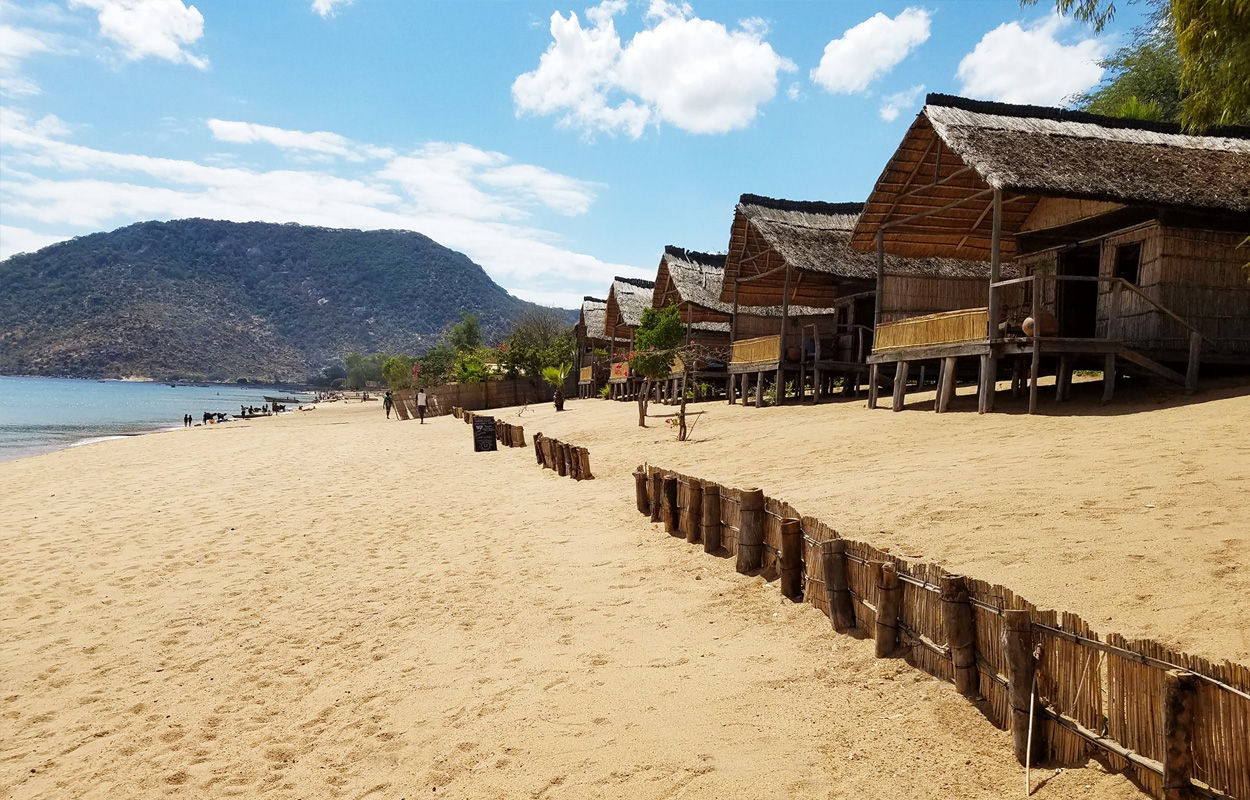top of page

Destination: Livingstonia
Livingstonia was founded in 1894 by Scottish missionaries. They had first established a mission in 1875 in Cape Maclear, which they named Livingstonia after David Livingstone. However, the mosquitoes and Malaria drove them to move northwards to Bandawe, near Chintheche. Again, this proved an unhealthy place and so they moved a third and final time to this beautiful plateau high above Lake Malawi. The Mission station gradually developed into a small town. The leading missionary Dr. Robert Laws established the best schools of his time and its graduates came to enjoy a good reputation, even in neighbouring countries. In 2003 the church of Central Africa Presbyterina (CCAP) founded Livingstonia University. Today, hundreds of students roam the campus.
Where to Stay
We have listed some accommodation places in this area. If these don't suit you, we are more than happy to create your custom tour with your priorities.
Mushroom Farm Eco-Lodge
Located on the edge of the cliff overlooking Lake Malawi, the Mushroom Farm Eco-Lodge offers the perfect setting to relax and soak in the surrounding nature. This little oasis nestled among the trees is a gathering space for anyone looking to find peace and community.
When you stay at the Mushroom Farm, you are supporting a community-based eco-lodge that believes in responsible tourism, sustainable community development, local empowerment and in encouraging a positive impact on the environment. The farm operates on 100% solar energy, the water is sourced from natural springs , and composting methods are used to feed the onsite permaculture gardens. Plus, it is a social enterprise, which means a percentage of the profits from your stay goes back into the community.
The Mushroom Farm offers a variety of comfortable and affordable naturally-built chalets, funky canvas safari tents, cliff-side campsites and dorms. All accommodation includes linens, mosquito nets and full use of the facilities.
Lukwe Eco-Camp
Lukwe means "A place of natural beauty", a name which fits this lodge perfectly. It is perched on the side of an idyllic valley, where the Manchewe and Kazichi Falls plunge 80 meters below into the deep and untamed gorge.
The view from the deck at the main lodge, where meals can be enjoyed and dreams are dreamt, crosses a valley with Nyika plateau in the backdrop, leads you to Lake Malawi, and takes you across the great expanse of the water into Tanzania and the Kipengere mountain range.
Lukwe offers tranquil lodging and camping on 5 hectares of Brachystgia and Miombo woodland. Unusual architecture welcomes you here, complemented by handcrafted wood and functional sculpture. Meals are served under the stars or near a crackling fire in the colder months when the clouds roll up the valley. The lodge is solar-powered and wood-fuelled. There is freshly baked homemade bread and the meals are cooked on wood-burning stoves.
Single and double thatched chalets built from natural materials face the valley, with the sound of the falls in the background and an amazing view to wake up to. A donkey-boiler provides gallons of hot water for showers. Nature spoils you at Lukwe, the staff does too - by servicing the chalets, lighting kerosene lanterns and log fires at sundown, provinding freshly squeezed orange juice or morning tea and coffee to your chalet. Thatched tents and camping are also available.
Activities
Visit Waterfalls: Surrounded by lush rainforest, the spectacular Manchewe Falls are the highest waterfall in Malawi at 125 meters high. You can see them from a distance, go up close and even hike to the bottom.
Explore Livingstonia : This sleepy university town makes for a fascinatingwalk. Much of what the missionaries achieved at Livingstonia still survives to this day, including many of the characteristic red-brick buildings. At the church, look up to see the beautiful stained glass window over the main entrance. It depicts a meeting of David Livingstone and the chiefs at Lake Malawi.
The Old Stone House, once the home of Dr. Laws, now houses a small museum with some interesting exhibits including old photographic prints, wall displays, furniture, and equipment dating to the earliest of times of the mission. Just in front of the Old Stone House is the very edge of the great Rift Valley, a sight that you will never forget.
You can discover these sites on your own or with a guide.
Nyika National Park: With an area of 3200 square km, Nyika is Malawi's largest park. It extends across the great Nyika plateau, which is a rolling whaleback grassland plateau, with many streams and pockets of evergreen forest. Reaching altitudes of over 2500, it boasts stunningly beautiful scenery and is often compared to wilderness areas found in Europe. It is however, inhabited by large numbers of African safari animals, such as zebras, bushbucks, roans, elands, leopards, warthogs, bushpigs, and the occasional hyena and jackal.
The park has a lot to offer for birdwatchers too: over 400 species have been recorded amongst them the rare Denham's bustard, the wattled crane, and the endemic red-winged francolin. Nyika is a perfect trekking and mountain biking destination. For the adventurous guided multiple-day hikes can be arranged, Alternatively, More conventional 4x4 excursions and safaris are also on offer.
Chombe Plateau: After the 4-5 hour hike to the top, you can enjoy an incredible 360 degree view over Lake Malawi, Nyika National Park, and the surrounding mountain ranges of Tanzania. You can arrange a guide through the lodge.
Best Time to Visit
If you are heading to Nyika National Park, the wet summer months from November to May are the best months for wildlife viewing as the weather is fair and less cold.
bottom of page